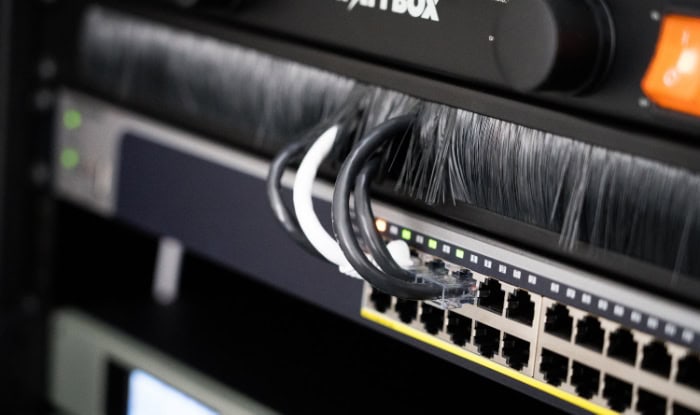What Is a Seedbox? Cloud Torrenting Explained

Seedboxes have transformed the way people share and access files online. These powerful remote servers, packed with cutting-edge hardware and lightning-fast internet connections, have become an indispensable tool for torrenting enthusiasts, content creators, and anyone seeking to optimize their file-sharing experience.
From their humble beginnings as simple storage solutions to their current status as sophisticated, feature-rich platforms, seedboxes have come a long way.
Exploring the World of Seedboxes
Seedboxes have become an essential component of the file-sharing landscape, offering users a powerful and efficient way to download, store, and share large files. But what exactly is a seedbox?
In simple terms, a seedbox is a remote server that is specifically designed and optimized for torrenting. These servers are typically located in data centers with high-speed internet connections, ensuring rapid download and upload speeds for users.
The Inner Workings of Seedboxes
At the core of a seedbox’s functionality is its ability to handle torrent files and manage the associated data transfers. When a user adds a torrent file to their seedbox, the server begins downloading the data from other peers in the torrent swarm.
The seedbox then stores the downloaded files on its hard drive, allowing the user to access and manage them through a web-based interface or FTP client.
One of the significant advantages of using a seedbox is that it offloads the torrenting process from the user’s personal computer or network. This means that the user’s ISP cannot monitor or throttle their torrenting activity, ensuring faster and more secure file transfers.
Dedicated vs. Shared Seedboxes
When it comes to choosing a seedbox, users have two primary options: dedicated seedboxes and shared seedboxes. A dedicated seedbox is a physical server that is exclusively allocated to a single user, offering maximum performance, customization, and storage capacity.
On the other hand, a shared seedbox is a virtual server that is shared among multiple users, providing a more cost-effective solution with slightly limited resources and customization options.
The choice between a dedicated and shared seedbox largely depends on the user’s specific needs, budget, and technical expertise. While dedicated seedboxes offer the highest level of performance and control, shared seedboxes are often sufficient for most users and provide an excellent balance between cost and functionality.
Seedboxes in the Torrenting Ecosystem
Seedboxes play a crucial role in the broader torrenting ecosystem by facilitating the efficient distribution of files among users. By allowing users to maintain high seeding ratios and contribute to the overall health of torrent swarms, seedboxes help ensure the availability and longevity of shared content.
Moreover, seedboxes have become particularly important for users of private torrent trackers, where maintaining a good ratio of uploaded to downloaded data is essential for continued access to the community. With the high-speed upload capabilities of seedboxes, users can easily seed files back to the swarm, improving their ratio and standing within the tracker community.
The Advantages of Using a Seedbox
Seedboxes offer a range of features and benefits that make them an attractive choice for file-sharing enthusiasts, content creators, and anyone looking to optimize their torrenting experience. From lightning-fast download and upload speeds to enhanced privacy and security, seedboxes provide users with a comprehensive solution for managing their torrenting activities.
Lightning-Fast Torrenting Performance
One of the most significant advantages of using a seedbox is the incredible download and upload speeds they offer. Seedboxes are typically hosted on high-performance servers with powerful hardware and gigabit internet connections, allowing users to achieve download and upload speeds that far surpass those of their home networks.
The technical aspects that contribute to a seedbox’s performance include the use of high-speed solid-state drives (SSDs), powerful processors, and ample RAM. These components work together to ensure that the seedbox can handle multiple simultaneous torrent transfers without any slowdown or bottlenecks.
Seamless Remote Access and Storage Integration
Another key benefit of seedboxes is the ability to access and manage files remotely. Most seedboxes provide users with a web-based interface that allows them to add, monitor, and control their torrent downloads from any device with an internet connection.
This remote access functionality makes it easy for users to manage their files on the go, without the need for a dedicated computer or complex setup.
Furthermore, seedboxes can be easily integrated with popular media servers and streaming platforms, such as Plex, Kodi, and Emby. By configuring their seedbox to automatically download and organize media files, users can create a seamless streaming experience that allows them to access their content from anywhere in the world.
Enhanced Privacy and Security Measures
Seedboxes also offer enhanced privacy and security compared to traditional torrenting methods. When a user downloads a torrent file through their seedbox, their personal IP address is not exposed to the torrent swarm.
Instead, only the seedbox’s IP address is visible, effectively masking the user’s identity and location.
While seedboxes provide a good level of privacy, they should not be considered a complete substitute for a VPN. VPNs encrypt all internet traffic between the user’s device and the VPN server, providing an additional layer of security and privacy.
However, when used in combination with a VPN, seedboxes can create a robust and secure torrenting setup that minimizes the risk of exposure and potential legal issues.
Maintaining Ratios on Private Trackers
For users of private torrent trackers, maintaining a good ratio of uploaded to downloaded data is crucial for continued access to the community. Seedboxes make it easy for users to maintain healthy ratios by providing high-speed uploading capabilities that allow them to seed files back to the swarm quickly and efficiently.
By consistently seeding files and contributing to the overall health of the torrent community, users can improve their standing within private trackers and gain access to exclusive content, higher download speeds, and other perks. In the long run, using a seedbox to maintain good ratios can help users build a positive reputation within the torrenting community and ensure their continued participation in private trackers.
Getting Started with Your Seedbox

Setting up and optimizing your seedbox may seem like a daunting task, but with the right guidance and a little bit of know-how, you can have your seedbox up and running in no time.
Selecting the Ideal Seedbox Provider
The first step in setting up your seedbox is choosing a reliable and reputable provider. There are numerous seedbox providers on the market, each offering different plans, features, and pricing structures. When comparing providers, consider factors such as:
- Server location and network speed
- Storage capacity and disk type (HDD vs. SSD)
- Bandwidth limits and traffic policies
- Supported applications and tools
- Customer support and documentation
- Price and billing options
Take the time to research and compare different providers to find the one that best suits your needs and budget. Reading user reviews and participating in online forums can also provide valuable insights into the experiences of other seedbox users.
A Step-by-Step Guide to Seedbox Setup
Once you’ve chosen a seedbox provider, the next step is to set up your seedbox. The exact setup process may vary depending on your provider, but the general steps are as follows:
- Sign up for an account with your chosen provider and select a plan that meets your requirements.
- Wait for your provider to provision your seedbox and provide you with access details, such as your server’s IP address, username, and password.
- Connect to your seedbox using the provided login credentials. Most providers offer a web-based control panel, such as ruTorrent or Deluge, for managing your seedbox.
- Configure your seedbox settings, such as download directories, port settings, and bandwidth limits, according to your preferences and the provider’s guidelines.
- Begin adding torrent files to your seedbox and managing your downloads through the web-based interface or a compatible torrent client.
Advanced Seedbox Configuration
Once your seedbox is up and running, you can take advantage of various advanced features and tools to optimize your torrenting experience. Some popular options include:
- Automation tools: Applications like Sonarr, Radarr, and Lidarr can automatically download and organize media files based on your preferences, ensuring that your seedbox always has the latest content.
- RSS feeds: By configuring your seedbox to monitor RSS feeds from your favorite torrent sites, you can automatically download new torrents as soon as they become available.
- Custom scripts: Many seedbox providers allow users to run custom scripts on their servers, enabling advanced functionality such as automatic file management, remote downloads, and more.
Experimenting with these advanced features can help you tailor your seedbox to your specific needs and streamline your torrenting workflow.
Seedbox Management and Maintenance Best Practices
To ensure that your seedbox remains in top condition and continues to perform optimally, it’s essential to follow some best practices for management and maintenance. These include:
- Regularly monitoring your seedbox’s performance and disk space usage
- Pruning old or unnecessary files to free up storage space
- Keeping your seedbox applications and scripts up to date
- Securing your seedbox with strong passwords and two-factor authentication
- Backing up important data and configuration files
- Communicating with your seedbox provider if you encounter any issues or have questions
Seedboxes in Action

Seedboxes are versatile tools that cater to a wide range of users and use cases. From content creators looking to distribute their work to media enthusiasts seeking to build their own personal streaming libraries, seedboxes offer a powerful and efficient solution for managing and sharing large files.
Empowering Content Creators
For content creators, such as independent filmmakers, musicians, and software developers, seedboxes provide an invaluable tool for distributing their work to a wide audience. By uploading their files to a seedbox and creating torrent files, creators can easily share their content with fans and followers, without the need for expensive hosting solutions or distribution platforms.
Seedboxes also enable creators to maintain control over their content and track its distribution across various torrent networks. With the ability to monitor download statistics and peer counts, creators can gain valuable insights into the popularity and reach of their work.
Enhancing Personal Media Collections
Media enthusiasts and collectors can also benefit greatly from using a seedbox to build and manage their personal media libraries. By configuring their seedbox to automatically download and organize media files from various torrent sources, users can create a centralized repository of their favorite movies, TV shows, music, and more.
Seedboxes can be seamlessly integrated with popular media server applications, such as Plex or Emby, allowing users to stream their content to any device, anywhere in the world. This integration creates a personal streaming setup that rivals the functionality and convenience of commercial platforms, without the associated costs or limitations.
Reliable Data Backup and Remote Access
In addition to their torrenting capabilities, seedboxes can also serve as reliable data backup and remote file access solutions. By storing important files and documents on a seedbox, users can ensure that their data is safe and accessible from anywhere with an internet connection.
This remote access functionality is particularly useful for users who frequently work from different locations or collaborate with others on projects. With a seedbox, users can easily share and sync files across multiple devices, without the need for complex setups or third-party services.
Conclusion
Seedboxes have emerged as a powerful tool in the world of file sharing, offering users a range of benefits and possibilities that extend far beyond traditional torrenting methods. From their ability to provide lightning-fast download and upload speeds to their enhanced privacy and security features, seedboxes have revolutionized the way users approach file sharing and content management.
Throughout this comprehensive guide, we’ve explored the various aspects of seedboxes, including their inner workings, key features, and practical applications. We’ve seen how seedboxes can empower content creators to distribute their work efficiently, enable media enthusiasts to build personal streaming libraries, and provide reliable data backup and remote access solutions.
However, it’s crucial to recognize that with the power and convenience of seedboxes comes a responsibility to use them ethically and in compliance with applicable laws and regulations. Users must be mindful of copyright restrictions and the potential consequences of sharing protected content without permission.
By balancing the benefits of seedboxes with a commitment to responsible usage, users can harness the full potential of these powerful tools while contributing positively to the file-sharing ecosystem. As the landscape of file sharing continues to evolve, seedboxes are poised to play an increasingly important role in shaping the future of content distribution and personal data management.


